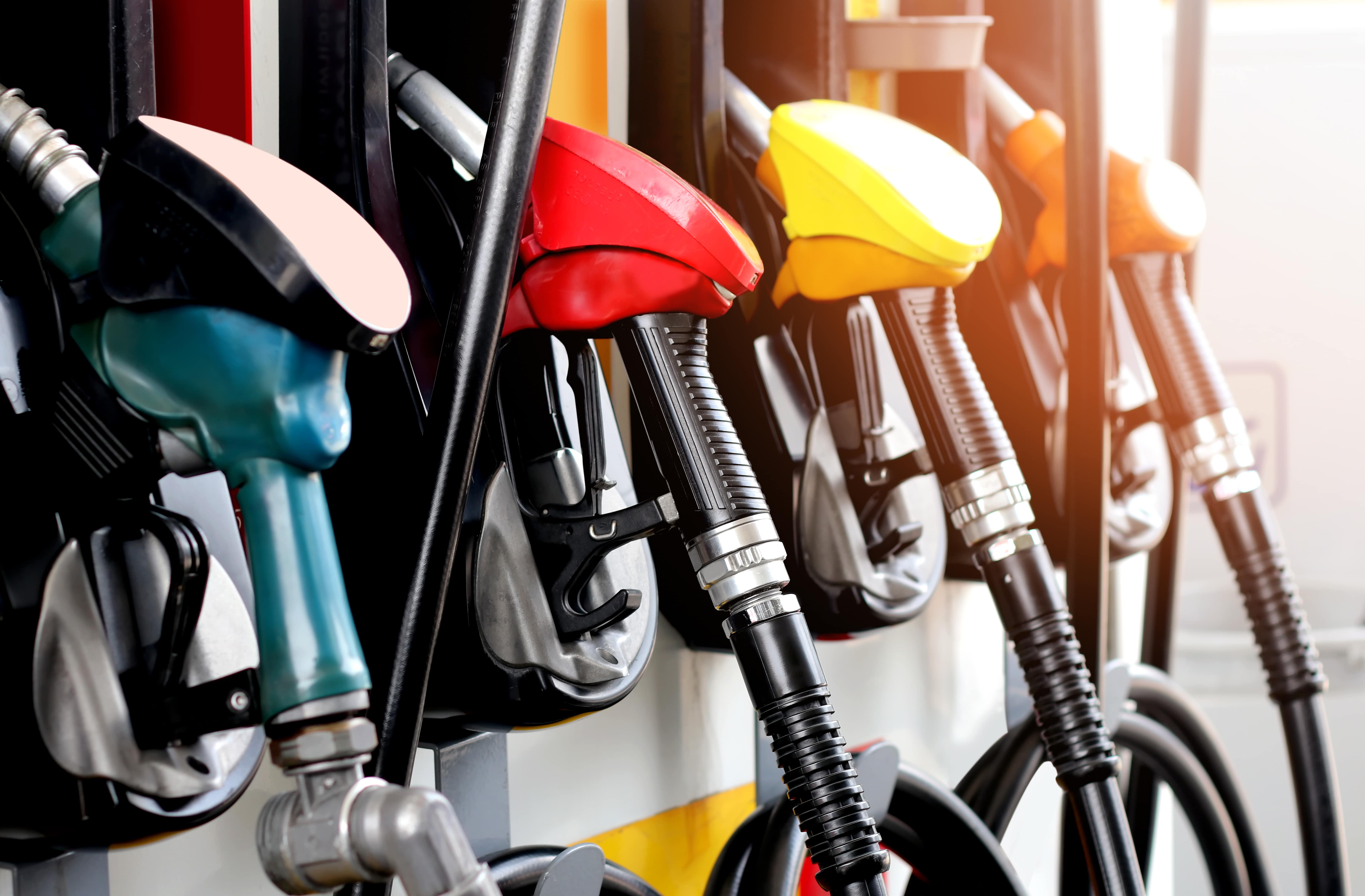
Guest
Brandstofbesparende tips voor vrachtwagenchauffeurs
Gemaakt: 16-08-2024
•
Bijgewerkt: 10-10-2024
Het brandstofverbruik van voertuigen is een van de belangrijkste aspecten die de kosten van transportbedrijven beïnvloeden. Het is van vitaal belang om te begrijpen hoe je de brandstofefficiëntie kunt verbeteren, zowel als manager als als chauffeur. Bij SNAP willen we professionele ondersteuning bieden aan iedereen die betrokken is bij vrachtvervoer - daarom hebben we een lijst samengesteld met tips die kunnen helpen bij brandstofefficiëntie onderweg.
Waarom is brandstofbesparing zo belangrijk?
Om het belang van brandstofefficiëntie bij benzine volledig te begrijpen, is het de moeite waard om te kijken naar de rol die brandstofkosten spelen in de budgetten van transportbedrijven. Volgens verschillende rapporten kunnen de brandstofkosten verantwoordelijk zijn voor 25% tot 35% van de uitgaven van wagenparkbeheerders. Het gebruik van brandstofbesparende tips kan de kosten aanzienlijk verlagen, waardoor een groot deel van het budget kan worden vrijgemaakt voor andere investeringen.
Een ander aspect waarom het brandstofverbruik de moeite waard is, is ecologie. Hoewel elektrische voertuigen langzaam ingang vinden in het vrachtvervoer, bestaan de meeste wagenparken nog steeds voornamelijk uit vrachtwagens met gewone verbrandingsmotoren. Aangezien transport verantwoordelijk is voor een vijfde van de wereldwijde uitstoot van vervuilende stoffen, kunnen tips om brandstof te besparen niet alleen jou en je bedrijf helpen, maar ook de planeet als geheel.
Brandstofbesparende tips van SNAP voor chauffeurs in het Verenigd Koninkrijk en Europa
Om u te helpen de stijgende kosten te bestrijden en de uitstoot van vervuilende stoffen te verminderen, hebben we een lijst met tips opgesteld voor een optimale brandstofefficiëntie van uw wagenpark. Deze zijn gebaseerd op actuele ervaringen en aanbevelingen van betrouwbare partners uit de branche - u kunt er zeker van zijn dat het implementeren van onze tips een groot effect zal hebben op uw brandstofbesparing.

1. Langzaam en regelmatig wint de race
Hoewel het verleidelijk kan zijn om te proberen zo snel mogelijk op je bestemming te zijn, is het belangrijk om rekening te houden met de maximumsnelheid tijdens het rijden. De huidige limieten zijn sinds 2015 van kracht en stellen de maximumsnelheid op enkele en dubbele rijbanen op respectievelijk 50 en 60 mph, en 70 mph op snelwegen. Belangrijk is dat voor voertuigen van meer dan 7,5 ton (waarbij het gewicht wordt berekend aan de hand van zowel het gewicht van de auto als dat van de goederen) strengere snelheidslimieten gelden, waaronder 60 mph op snelwegen. Het is goed gedocumenteerd dat rustig rijden en onder de limieten blijven helpt bij het brandstofverbruik van voertuigen - bovendien helpt het boetes voor snelheidsovertredingen te voorkomen en vermindert het de kans op ongevallen aanzienlijk.
2. Leer over brandstofverbruik
Om de impact van uw rijstijl op de transportkosten volledig te begrijpen, moet u de fijne kneepjes van brandstofverbruik kennen. MPG is de meest gebruikte eenheid om het brandstofverbruik van een wagenpark te meten. De berekening is vrij eenvoudig, maar de eenheden kunnen verwarrend zijn, omdat de meeste tankstations in het Verenigd Koninkrijk en Europa brandstof in liters verkopen. Een Britse gallon is gelijk aan 4,546 liter. De meeste huidige auto's leveren onderweg MPG-statistieken, zodat u uw brandstofverbruik tijdens het rijden gemakkelijk kunt controleren.
3. Rem minder en rijd in een rustig tempo
Een kalme rijstijl kan wonderen doen voor het brandstofverbruik van je truck. Rem waar mogelijk op de motor, houd een veilige afstand tussen u en de andere auto's en bovenal - gebruik uw gezond verstand op de weg. Blijf alert om snel situaties te herkennen waarin je moet vertragen en pas je snelheid dienovereenkomstig aan om veilig te rijden en tegelijkertijd je brandstofverbruik te verlagen.
4. Rijd indien mogelijk met hogere versnellingen
Een ander aspect waar je rekening mee moet houden is hoe de motor werkt - hogere versnellingen betekenen minder omwentelingen per minuut, waardoor de motor minder wordt belast. Tenzij je bergafwaarts gaat of de versnelling vermindert om in te halen, probeer dan zoveel mogelijk in de hoogste versnelling te rijden. Dit is een van de belangrijkste rijtechnieken om brandstof te besparen.
(https://prodsnapstorage.blob.core.windows.net/public-news/5bd8e8c6-4504-46ee-9dcd-beb44ffc29e7-shutterstock_1532934770-min.jpg)
5. Zorg goed voor je truck
Zorg goed voor je voertuig en het zal goed voor jou zorgen. Onderhoud je voertuig regelmatig, houd het oliepeil en de bandenspanning in de gaten en controleer de efficiëntie van de motor. Met deze tips om brandstof te besparen kunt u veel doen en reparaties en ander onderhoud uitstellen. Een aspect dat vaak over het hoofd wordt gezien bij het besparen van brandstof voor wagenparken zijn correct opgepompte banden, die het brandstofverbruik met wel 2% kunnen verlagen.
6. Plan uw route en blijf op de hoogte van de toestand van de wegen
Als u uw route van tevoren plant, kunt u voorkomen dat u verkeerde afslagen neemt en onnodige kilometers aan uw reis toevoegt. Dit wordt vaak automatisch gedaan door uw navigatiesysteem, maar u moet ook op de hoogte blijven van mogelijke omleidingen en slechte wegomstandigheden om uw route verder te optimaliseren.
7. Houd rekening met aerodynamica
Wat vaak over het hoofd wordt gezien bij het geven van tips om brandstof te besparen, is het effect van luchtweerstand op het brandstofverbruik. Bij hogere snelheden kan zelfs het open hebben van de ramen nadelig zijn voor het brandstofverbruik. Aerodynamische verliezen kunnen het brandstofverbruik met wel 20% verhogen - dit punt is zeker de moeite waard om in gedachten te houden tijdens het rijden.
8. Gebruik de zuinigste vrachtwagens
Deze tip is meer gericht op wagenparkbeheerders, maar het is slim om hier als chauffeur ook aan te denken. Hoewel het moeilijk is om de meest zuinige truck te kiezen, is er zeker geen tekort aan zuinige trucks op de markt - vooral onder de nieuwere modellen. Trucks met goede MPG zijn van vitaal belang voor elk transportbedrijf. Hoewel in sommige gevallen de initiële kosten van de trucks met het beste verbruik hoger zijn dan die van een alternatief dat meer brandstof verbruikt, worden de besparingen over een langere periode duidelijk.
9. Zet je motor uit bij stationair draaien
Vooral wanneer je de snelweg verlaat en op weg bent naar je eindbestemming, die zich in een stad kan bevinden, kom je vaak in een situatie terecht waarin je stilstaat in het verkeer, zelfs voor langere periodes. In zulke gevallen is het de moeite waard om je motor een tijdje uit te zetten. Zelfs de zuinigste vrachtwagens hebben hier baat bij - tegelijkertijd verminder je de uitstoot en het geluidsniveau.
10. Gebruik vertrouwde oplossingen om je op weg te helpen
Het vinden van een parkeerplaats of een goede plek om te tanken kan veel onnodige kilometers aan uw route toevoegen. Om dit proces te versnellen, kunt u TMS-software (Transport Management System) gebruiken - het SNAP-platform is beschikbaar voor zowel wagenparkbeheerders als chauffeurs. Tot de beschikbare functies behoort de SNAP Parking module waarmee u[ truckstops] (https://snapacc.com/map/) en depotparkeerplaatsen kunt vinden, waardoor u tijd en brandstof bespaart.

Samenvattend - rijd rustig, houd rekening met de aerodynamica, gebruik het juiste voertuig en maak gebruik van de SNAP Account-functies
Hoe bereikt u een optimaal brandstofverbruik? Er zijn veel manieren om het brandstofverbruik te verminderen - van een kalme en rustige rijstijl tot het gebruik van de zuinigste vrachtwagens die beschikbaar zijn en van aerodynamica tot vrachtwagenonderhoud. Je kunt ook geweldige resultaten behalen door gebruik te maken van de functies die beschikbaar zijn op het SNAP Account-platform, zoals SNAP Fuel en SNAP Parking.
Onze oplossingen helpen momenteel meer dan 185.000 chauffeurs in heel Europa en helpen meer dan 8.500 wagenparken om te besparen op brandstofkosten. Uitgaven voor brandstof kunnen 25-35% van de kosten van een transportbedrijf uitmaken - naast economische voordelen is zuinig omgaan met brandstof ook van vitaal belang voor de planeet omdat het helpt de uitstoot te verminderen.



